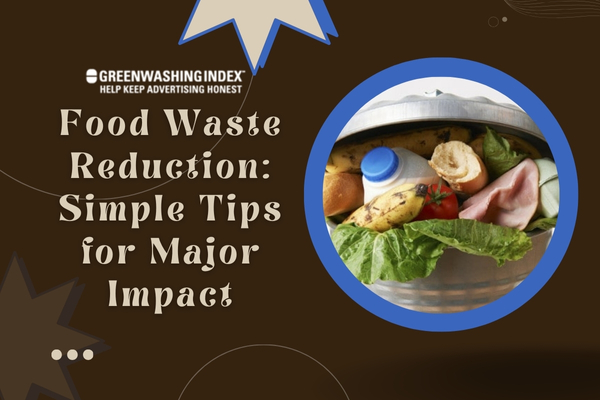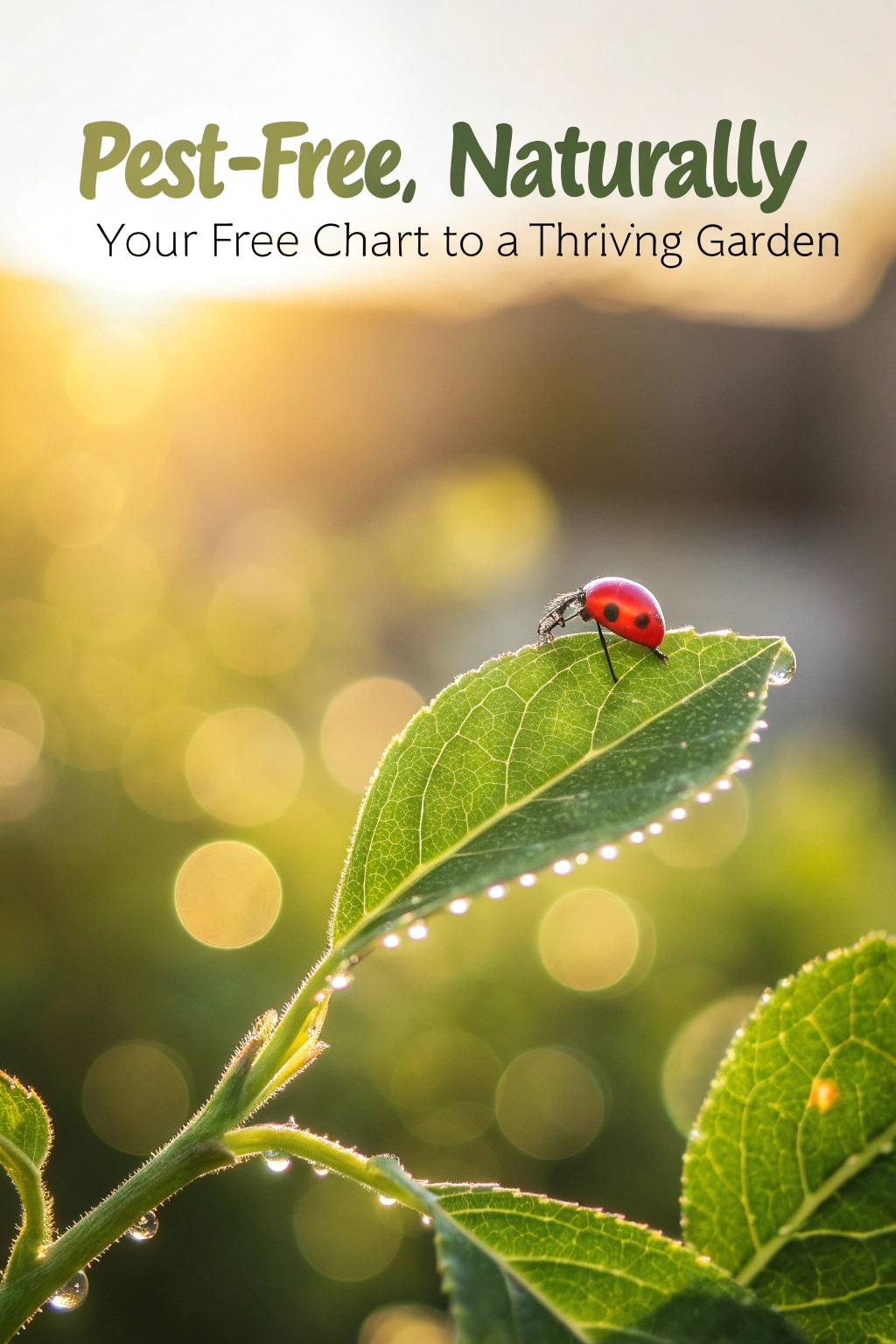Have you ever thought about how much food ends up in the trash? A lot, right? It’s a big problem – but you can be part of the change.
We all want to leave this planet better than we found it, and that means looking at what we throw away, especially when it comes to food. Food waste reduction is more than just a good deed; it’s a movement that’s gaining momentum worldwide.
So, how do we win the battle against food waste? It’s not as hard as you might think. Small changes make a big difference, like buying only what we need and finding creative ways to use leftovers. By planning meals and being mindful of our shopping habits, we can cut back on the amount that goes unused.
This isn’t about cutting corners or depriving ourselves—it’s about being smarter with resources and avoiding unnecessary waste.
What You’ll Discover Inside
- Quick wins in your daily routine for less food waste
- Easy strategies to make your groceries last longer
- Ideas for leftovers you haven’t thought of yet
- How small changes add up to big environmental benefits
- Community movements you can join today
Combating Food Waste at Its Source
Food waste is a big issue. When we talk about food waste reduction, I focus on how we all can help right from the start. It’s like if you fix a tap that’s dripping, you’ll save a lot of water in the long run. So, let’s dig into this.
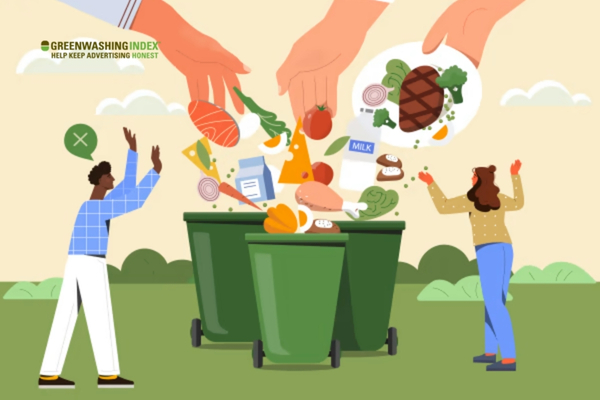
Identifying Key Causes of Food Waste
When I look at why so much food goes to waste, there are a few main reasons that pop up:
- At home, we sometimes buy too much or cook more than needed. Then, the leftovers get tossed out.
- In stores, food may sit too long and go bad. They might also throw out items that don’t look perfect but are still good.
- Farmers might have crops that never get to us due to bad weather or because there’s just too much, and it’s not worth selling.
To show it clearer:
- Household Habits: People often ignore what’s in their fridge until it smells funny and then chuck it away.
- Retail Practices: Supermarkets may discard food past their ‘sell-by’ dates even when they’re safe to eat for days after.
- Agricultural Losses: If fruits don’t look a certain way or if there’s an oversupply and prices drop, farmers may leave them in the field.
These problems happen everywhere – from houses to big farms.
Solutions for Production-Level Food Waste Reduction
Farmers grow our food, but sometimes, a lot gets wasted before it even leaves the farm! To keep more food on our plates, producers can:
- Improve Harvesting Methods: Use machines or techniques that don’t damage crops as much.
- Better Storage: Build good places to keep harvests cool and dry so they last longer.
- Flexible Selling Standards: Work on ways so slightly imperfect fruits and veggies make it to shops instead of getting thrown away.
Here is how that works:
- When farmers use gentle harvesters, less fruit gets bruised, and thus, less is thrown away.
- With silos or fridges designed for different crops, onions won’t rot fast, and apples stay crisp for months!
- If stores accept bent carrots or twin cherries as just another carrot or cherry (since they taste the same), farmers don’t have to sort out as many ‘ugly’ ones.
These steps help keep more good food out of bins and turn them into meals instead—it’s smart for wallets AND our planet!
Remembering these details helps me support sustainable food practices every day—starting with little choices at home up through what I expect from shops where I buy my groceries!
Making smart choices can lead us on our way towards minimizing food losses together!
Also Read: Composting Corn Cobs: Your Ultimate Eco-Guide
Retailers’ Role in Reducing Food Surplus
Retailers are key players in the fight against food waste. The choices they make can have a big impact on how much food gets thrown away. So, what can retailers do to help? Let’s dive into that.
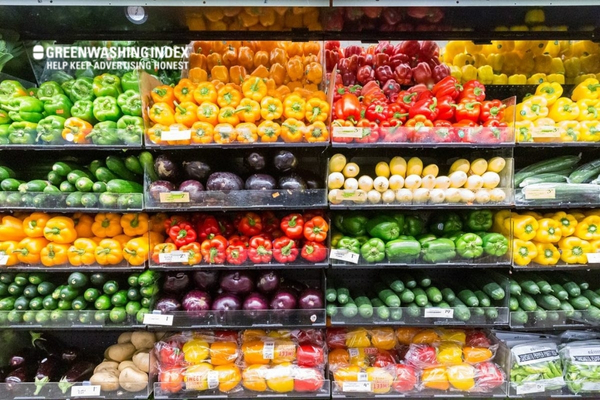
Tactics Retailers Can Employ for Food Waste Reduction
Retail stores, especially those selling food, have a couple of smart ways to sell more and throw away less.
- Smarter Inventory Management: By keeping a close eye on what sells and what doesn’t, stores can order just the right amount of food. This way, there’s less chance that something will go bad before it gets sold.
- Discounting Products Near-Expiry: When products are about to expire, putting them on sale draws attention to them and helps them get sold more quickly.
- Clear Labeling: Simple labels that show when a product should be used can help customers and staff alike know what should be eaten first.
- Donation Programs: Stores often have foods that are still good but not perfect for selling. These items can be given away to shelters or food banks. It helps the community and reduces waste.
- Educating Employees: Training store staff on reducing waste means they’ll be better at managing products in-store.
These steps help retailers cut down on the amount of excess food they have to deal with and make sure more food finds its way onto plates instead of in bins.
Encouraging Consumer Behavior Change in Stores
Changing how shoppers think about buying their groceries is another big step towards cutting down on waste. Here’s how stores can lead this change:
- Highlight ‘Ugly’ Produce: Some fruits and veggies might look less than perfect, but they taste just as good! By selling these at lower prices or showcasing them creatively, stores can stop perfectly good produce from being thrown out.
- Teach Shoppers How to Store Food: Simple signs or flyers that tell customers the best way to keep different foods fresh could mean those foods last longer once they leave the store.
- Promoting Smaller Portions: Encouraging people to buy only what they need by offering smaller sizes or loose produce helps prevent extra food from ending up as waste at home.
- Loyalty Rewards for Sustainable Choices: If a store rewards customers for bringing their own bags or containers or buying ‘ugly’ produce, people will likely make more eco-friendly choices.
Stores hold much power when it comes to driving change toward sustainable shopping habits—after all, shopping is where our relationship with the majority of our food begins!
By steering this relationship towards mindful purchasing and usage practices through education and incentives, retailers aren’t just benefiting their bottom line; they’re setting trends for responsible consumption, too!
Also Read: Glass Recycling Uncovered: Endless Lifespan Explained!
From Plate to Planet: The Direct Impact of Your Diet
When I sit down to eat, it’s not just my stomach that gets filled up. Each bite I take connects me to a huge global story about food. It’s amazing how my little plate can touch parts of the world miles away! When I pick what to eat, it has a big ripple out there. So, here’s what happens:
How Your Meal Choices Drive Food Waste Reduction?
Every time I go shopping or cook a meal, my choices matter. By choosing wisely, I become part of the move to cut down on throwing away food.
Now, let me walk you through how picking what I eat can help fight wasted food:
- Planning My Meals: Before hitting the store, I think ahead about what meals I will cook during the week and make sure to buy only what’s needed.
- Understanding Dates: On packaging, there are dates like “best by” and “use by.” Getting the hang of these helps me use food while it’s still good rather than tossing it out too soon.
- Serving Smaller Portions: If less goes on my plate, less uneaten food goes in the trash.
- Loving Leftovers: Any extra dinner becomes my next-day lunch.
- Shopping Local and Seasonal: When groceries travel less distance and grow in their natural season, they’re fresher and stick around longer at home without spoiling.
By doing these simple things when choosing meals or snacks, folks like me can really help keep good food from ending up in landfills where they just make more pollution.
Tips for Consumers Aiming for Zero-Waste Kitchens
A zero-waste kitchen sounds like a big goal, but it’s pretty easy when broken down into steps. Ready? Here we go!
- Make Friends with Your Freezer:
- Fruit going soft? That freezer will keep them sweet and ready to be blitzed into smoothies.
- Can’t finish your bread? Freeze slices and defrost as needed.
- Get Creative in Cooking:
- Are veggies looking tired? Soups or stews don’t mind if they’re a bit wilted.
- Random bits left in your fridge could turn into an omelet or casserole!
- Store Food Right:
- Tomatoes hate the cold… keeping them on the counter is better!
- Onions last longer outside the fridge, but remember to keep them separate from potatoes.
- Divvy Up Duties:
- Rotate who checks for things that need eating soon – it could be a weekly task for someone in your house.
- Share Surpluses:
- Did you cook too much pasta? Maybe a friend would love some!
- Learn Preservation Tricks:
- Pickle surplus cucumbers or make jam from excess berries – tasty ways to stop waste!
- Buy What You Need:
- Bigger isn’t always better if half gets chucked out because it goes bad before being used up!
Putting these pointers into play every day at home causes fewer bits of broccoli hidden at the back of fridges around town to turn slimy! If everyone starts swinging towards waste-free kitchens, imagine all those saved apples avoiding being dumped!
Also Read: 20 Earth Day Tips for a Real Transformation Impact
Environmental Costs Cut by Cutting Down on Wasted Meals
You might not think about it much when you toss out half a plate of food, but there’s a big problem hiding behind those scraps. Throwing away food takes more than just the meal itself.
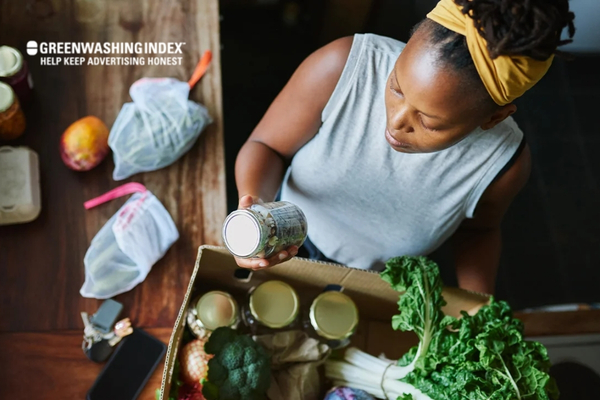
It’s like throwing away all the water, energy, and work it took to make that food. Everyone talking about food waste reduction means we’re working hard to use less and save more.
The Ripple Effect of Reduced Food Disposal on Climate Change
- Less Food in Dumps Equals Less Methane: When we throw food away, it usually ends up in landfills, where it rots and gives off methane gas. Methane is like a thick blanket for our planet; it traps heat and warms things up too much. But here’s a win: when we cut down on food we throw away, there’s less rotten stuff making methane gases. Imagine everyone doing this — fewer stinky piles of trash can mean cooler temperatures for all of us.
- Every Saved Bite is a Help to Our Atmosphere: By cutting back on what we dump out, I mean really thinking before throwing good food in the trash, we touch something bigger than your kitchen bin – the air everyone breathes! Fewer tossed salads or leftover lasagnas make for cheerier skies.
Conserving Precious Resources Through Mindful Consumption
Being mindful doesn’t need big words or grand plans; small steps by each one can add up big time! Every bit of effort towards reducing food waste shields clear blue waters from turning swampy green or stops mountains from losing their snowy tops only because someone didn’t finish their sandwich.
- Save Water Drop by Drop: Did you know that growing just one apple needs lots of water? Now think about that with every single thing on our plates! When we bin our uneaten meals, all that water used is wasted too – not just drops but whole oceans trapped in every wasted bite. Paying attention to what I eat means I’m being kind to rivers and lakes as well.
- Energy Savings Shine Brighter: Baking bread or cooking pasta uses energy—electricity might come from cold places full of coal or windswept fields with giant windmills turning around and around. Eating up all my spaghetti means those windmills don’t need to turn quite as fast since I’m not asking for more pasta.
- Keeping Land Hunky-dory: Farms need nice Earth to grow tomatoes or potatoes, but what if I said eating everything on my plate keeps the ground under those crops happier? By being sensible with groceries and meals – not having too much so none gets thrown – then fewer fields get turned into farmland, which leaves more space for trees to grow wild!
That’s how remarkable something as simple as mindful munching could be—changing bits of everything around us while still enjoying tasty bites!
Also Read: DIY Face Masks: Your Guide to Eco-Friendly Creations
Mobilizing Communities Toward Effective Food Waste Reduction Strategies
Winning the battle against food waste isn’t a one-person job. It takes a whole community to come together and take steps to cut down on the amount of good food being tossed out. I want to talk about how everyday folks like you and me can play a big part in stopping this problem.
Grassroots Efforts That Amplify Impact
When it comes to fighting food waste, there’s power in numbers. By joining hands in our communities, we can make a real difference. There have been some inspiring grassroots efforts out there that have brought neighbors together for a common cause:
- Communal Composting Plans: I’ve seen lots of neighborhoods start composting programs where everyone can chip in their kitchen scraps. This turns potential waste into something that can help gardens grow.
- Step 1: Set up composting bins in inaccessible areas within the neighborhood.
- Step 2: Educate everyone on what can go into these bins – like fruit peels and coffee grounds.
- Step 3: Use the compost for community gardens, which further reduces food waste by providing local produce.
- Local Awareness Campaigns: Knowledge is power, right? When we all get smart about what we’re throwing away, we start looking for ways not to. That’s why local campaigns raising awareness about food waste play such an essential role.
- Action 1: Host workshops or talks with experts who know all about cutting down on waste at home.
- Action 2: Spread tips and tricks through flyers or social media on how best to store food so it stays fresh longer.
These kinds of projects really show what we can do when we work together as a community.
Governmental Policies Shaping National Approach to Food Oversupply Dilemmas
Of course, it’s not just about small groups doing their bit; governments around the world are starting to step up, too!
- Legislative Acts: There are now laws that push supermarkets and restaurants to donate unsold food instead of throwing it away. These laws help get the surplus grub onto the plates of those who need it most rather than into trash cans.
- Law A could require stores of certain sizes to donate any untouched prepared foods at the end of each day.
- Law B might give tax breaks to companies that prove they’re working hard at reducing their waste.
- Government-Funded Programs: Some governments are funneling money into programs aimed at helping with this issue from top-down approaches:
- Program X could financially support local farms so they only grow what they know will sell – stopping excess before it starts.
- Program Y might fund research into new ways to keep food fresh during transport or how best to recycle more complicated packaging materials.
We’re living at a time where both individuals and those holding political power recognize how crucial it is that we cut down on our discarded dinners and uneaten lunches.
Reduce, reuse, recycle – this simple mantra isn’t only about saving soda cans and newspapers; it also holds true for saving spaghetti bolognese and bread rolls from turning into just another statistic in our growing pile of global garbage. Let’s keep pushing forward because every little effort counts!
FAQs
What are simple everyday actions I can take toward reducing my personal contribution to food waste?
To cut down on your own food waste, plan meals, shop smartly, store food properly, and eat leftovers. By doing these things, you make sure less food gets thrown away.
Can small changes in consumer behaviors significantly impact national levels of wasted sustenance?
Yes, even little things like buying only what you need and using up all parts of the food can add up over time. As more people do this, it really helps to lower the amount of food that gets wasted across the country.
What are the most commonly wasted foods, and how can we utilize them better?
Fruits and vegetables are often thrown out more than other foods. To use them better, try freezing them for smoothies or making soups or stews with produce that’s about to go bad.
Are there any apps or tools that help track our footprints regarding spoiled provisions?
There are several apps designed to help keep an eye on what we throw away. These tools remind us to use items before they spoil and give tips for meal planning and shopping so we reduce our waste.
Conclusion
In my journey to explore food waste reduction, I’ve learned that it’s a battle worth fighting. We can all make significant changes, from the way producers manage crops to our own kitchen habits.
Grocery stores have a big role, too, influencing customers and managing surplus sensibly. Each meal choice we make can help reduce the environmental impact, save resources, and push for better community strategies. With mindful practices and supportive policies, we can win this war against food waste.
Key Takeaway Points:
- Food waste reduction starts at production and extends to our plates.
- Retailers can dramatically cut food surplus through strategic actions.
- Personal dietary choices significantly contribute to minimizing food loss.
- Simple consumer tips can transform households into zero-waste zones.
- Environmental sustainability gains from each step of reduced food disposal.
- Community efforts and government policies are crucial for comprehensive change.

